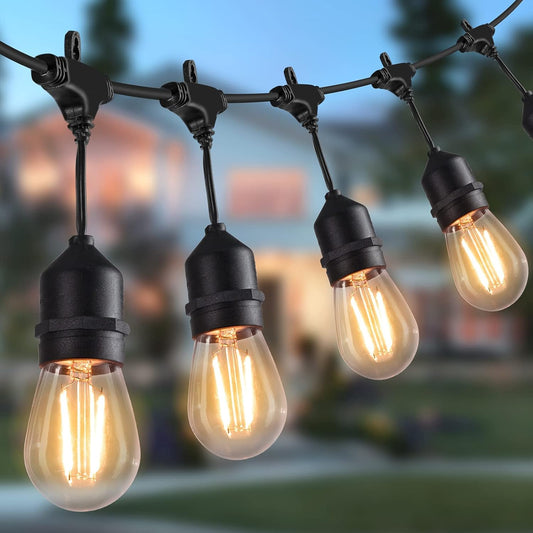
Avoid fire | Choose a high-quality cable LED outdoor string light
LED outdoor string lights are essential in your yard decoration. As the lifespan of LED lights increases, low-quality LED lights may flicker, short circuit, and even cause fire. Therefore, choosing a high-quality LED outdoor light with copper wire will make your use safer.
In the process of purchasing, aluminum wires for LED lights are more prone to fire than copper wires: wires are a very important part of LED lights and are also the most easily overlooked when purchasing. Currently, household wires on the market are mainly divided into two types: copper wires and aluminum wires. However, in electrical circuits, aluminum wire is often more prone to catching fire than copper wire, and the risk of aluminum wire catching fire is much greater than that of copper wire, mainly due to the characteristics of aluminum wire LED lights.
Aluminum wire is more prone to oxidation than copper wire
There is more or less film resistance on the surface of the conductor. If the film resistance causes the connection to overheat, overheating will increase the film resistance and reduce conductivity, which is particularly severe in aluminum wire connections. This is because even if the surface of the aluminum wire is scratched and polished, it only needs to be exposed to air for a few seconds to be oxidized and immediately form an aluminum oxide film. Although its thickness is only a few micrometers, it has a very high electrical resistivity, resulting in a large thin film resistance. Therefore, when connecting aluminum wires during construction, conductive paste should be applied immediately after the surface of the aluminum wire is scraped clean, cutting off the contact between the surface of the aluminum wire and the air, otherwise it will increase the contact resistance.
Aluminum wire has a higher coefficient of expansion than copper wire
The expansion coefficient of aluminum is as high as 23 × 10-6/℃, which is 39% larger than copper and 97% larger than iron. When an aluminum wire is connected to these two metal conductors and current flows through them, the connection point generates heat due to contact resistance. All three conductors will expand, but aluminum expands more than copper and iron, which can cause the aluminum wire to be squeezed. After the circuit is cut off and cooled, the aluminum wire is slightly flattened and cannot be completely restored to its original state, causing gaps to loosen at the connection. Air enters and forms an aluminum oxide film, increasing the contact resistance.
When the power is turned on, the heat becomes even stronger, making the situation worse. In severe cases, it may ignite due to abnormal high temperatures or sparks. Therefore, transition joints should be installed when connecting large section aluminum conductors with copper and iron conductors. The connection of aluminum wires with a small cross-sectional area (not greater than 6mm2) should use spring crimping caps, so that regardless of whether the connection is powered or heated, the contact surface of the connection can withstand the pressure of the spring, allowing air and moisture to enter without gaps. To maintain good conductivity of the connection.
Aluminum wire is more susceptible to electrolytic corrosion than copper wire
If there is an acidic or alkaline liquid between two metals with different potentials, the two metals will form a local battery. The potential of aluminum is -0.78V, and the potential of copper is -0.17V. When there is salt containing moisture between aluminum and copper conductors, this type of local battery is formed. Ionization can corrode low potential aluminum conductors and increase contact resistance. For PVC insulated aluminum core wires and cables, another issue may arise. In order to prevent hydrogen chloride gas from decomposing from PVC insulation, stabilizers are added to PVC insulation to prevent hydrogen chloride decomposition. But when the circuit temperature exceeds 75 ℃, such as circuit overload or high connection temperature due to other reasons, stabilizers can no longer prevent the formation of hydrogen chloride. Hydrogen chloride will corrode aluminum, thereby increasing contact resistance and fire hazards.
Unqualified wires and cables not only affect the normal operation of our LED lights, but also directly affect our life safety. Therefore, in order to improve the safety of our home circuits, we recommend that you choose our pure copper wire LED outdoor string lights.
For more information on the difference between copper wire and aluminum wire, please refer to:
https://foroureyes-ledlighting.com/blogs/news/what-is-the-difference-between-aluminum-wire-and-copper-wire





